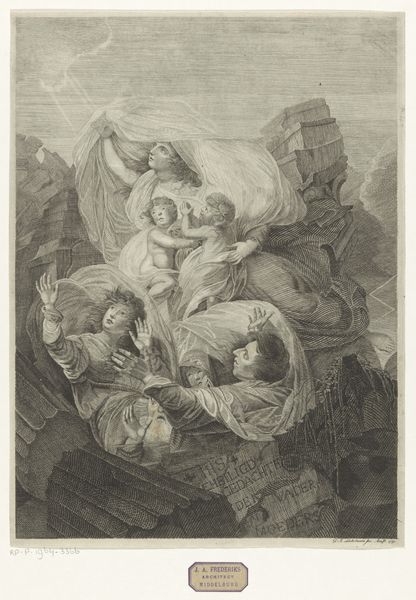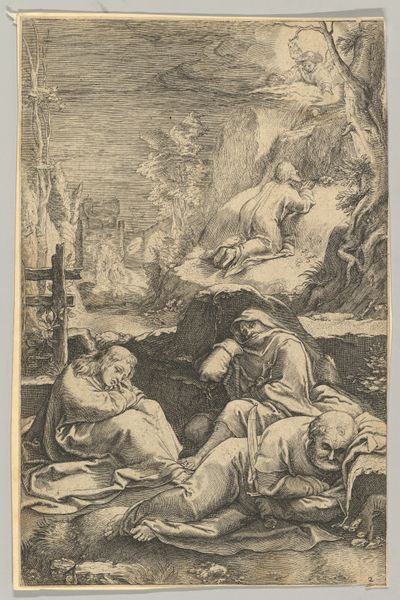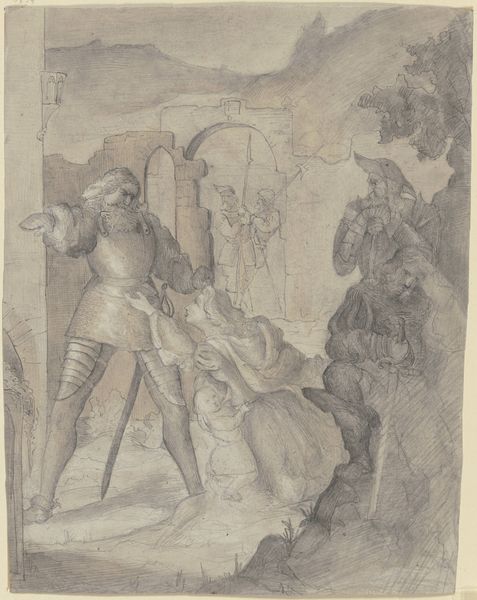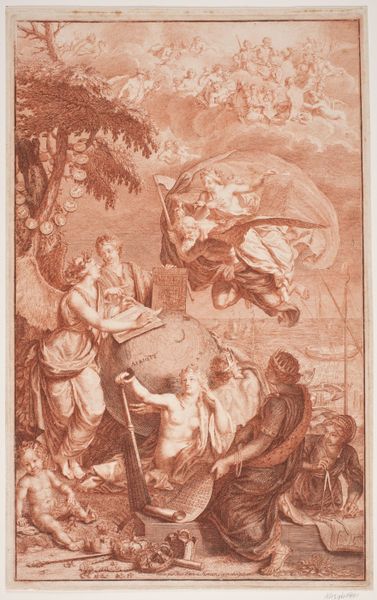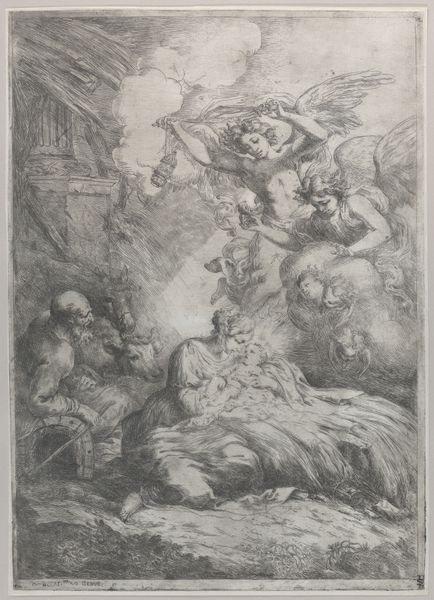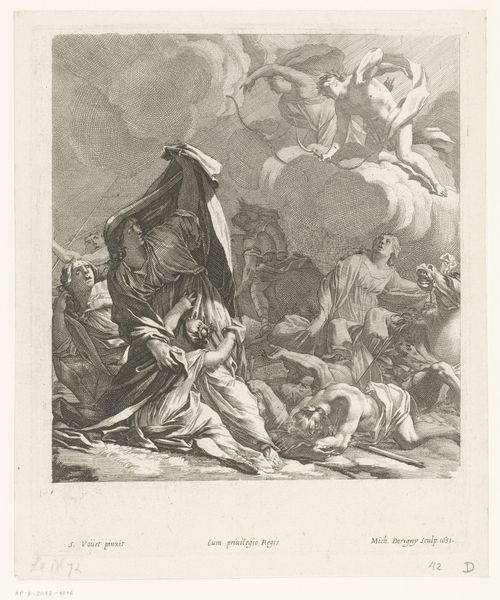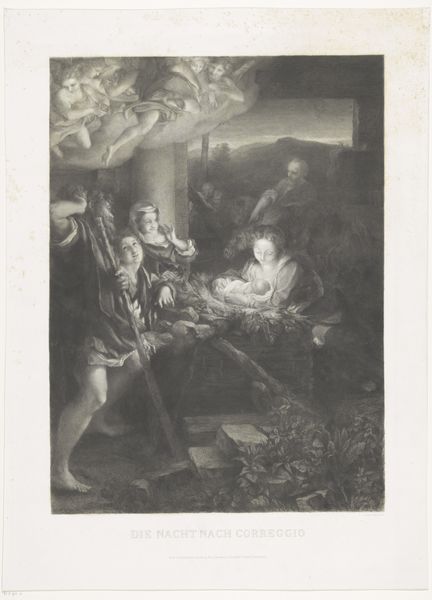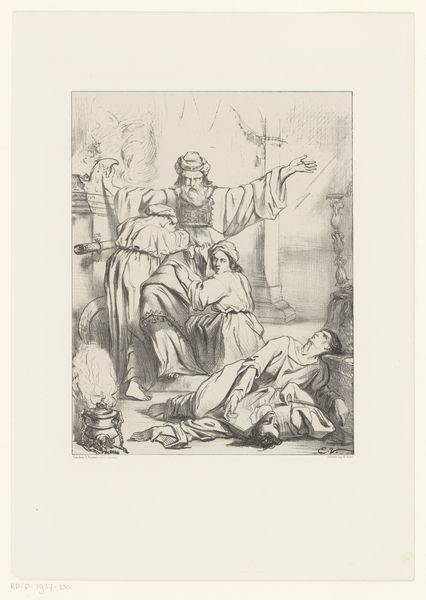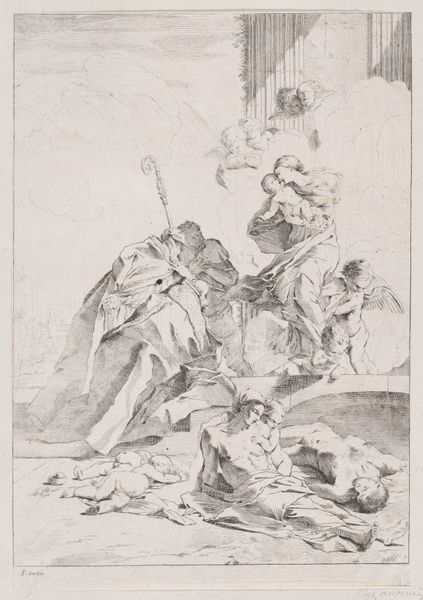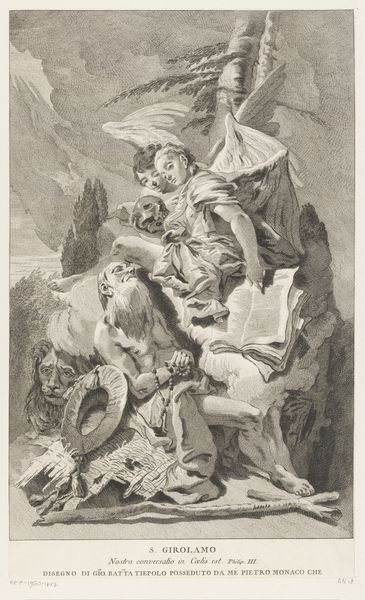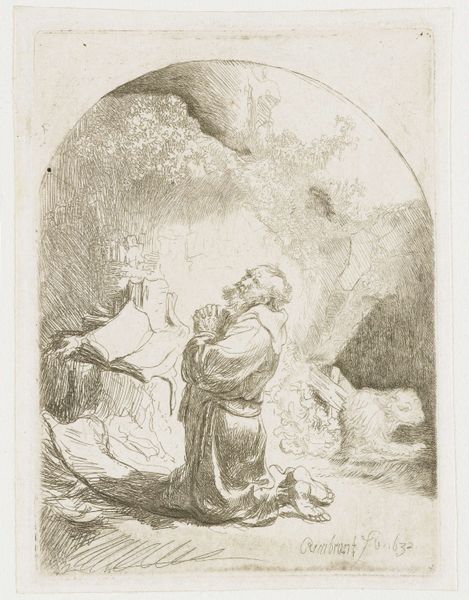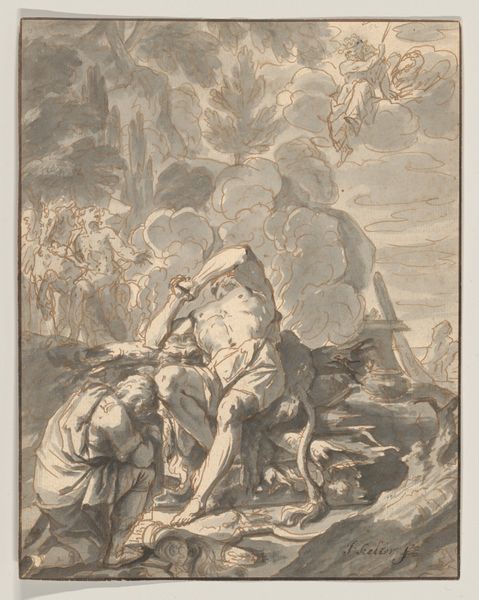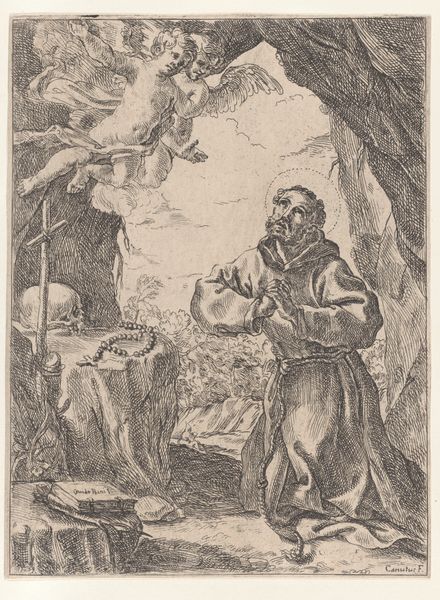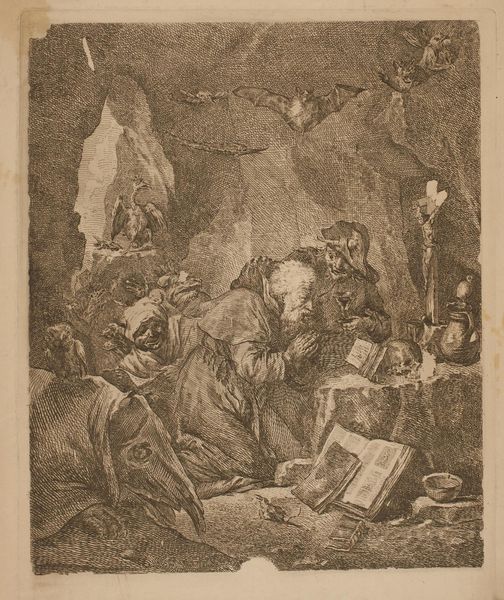
drawing, charcoal
#
drawing
#
allegory
#
narrative-art
#
baroque
#
charcoal drawing
#
figuration
#
vanitas
#
line
#
charcoal
#
history-painting
Dimensions: height 217 mm, width 280 mm
Copyright: Rijks Museum: Open Domain
Claude Gillot created this drawing titled "Vanitas-Allegorie," sometime between 1673 and 1722 using pen and brown ink. The allegorical figure of death dominates the scene, adorned with wings and surrounded by symbols of earthly transience: coins, books, and musical instruments, all of which underscore the fleeting nature of life. Here, Death clutches a tablet inscribed with reminders of mortality, an echo of the memento mori tradition found in ancient Roman art and funerary practices. We see a skeletal figure reminiscent of the danse macabre, a medieval allegory where death leads all social classes in a dance, reminding us that death is the great leveler. Consider how this resonates with depictions of winged psychopomps in ancient Greek art, guiding souls to the afterlife, or even the Grim Reaper, a figure that has haunted our collective imagination across centuries. This image invites us to confront our own mortality, tapping into a primal fear, yet also prompting reflection on the value of life, a dance between dread and contemplation that echoes through time.
Comments
No comments
Be the first to comment and join the conversation on the ultimate creative platform.
